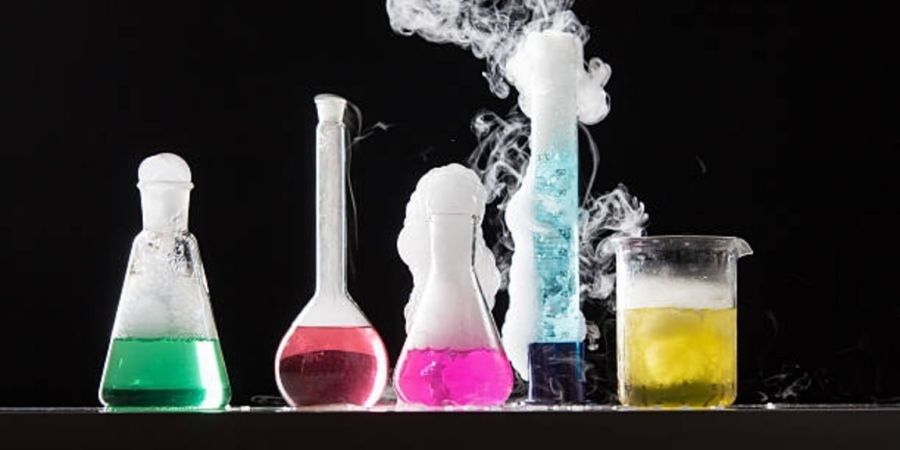

Blending preparing pop and vinegar is a well known approach to perceive what happens when synthetic substances respond. On the off chance that you need to get familiar with compound responses, there are a lot of others you can perform at home or in a school lab. The 10 beneath produce the absolute most stunning outcomes.
1. Thermite and Ice
The thermite response is fundamentally an illustration of what happens when metal consumes. What occurs in the event that you play out the thermite response on a square of ice? You get a stupendous blast. The response is marvelous to such an extent that the "Mythbusters" group tried it and checked it was genuine.
2. Briggs-Rauscher Swaying Clock
This compound response is astonishing in light of the fact that it includes a cyclic shading change. A dreary arrangement goes through clear, golden, and dark blue for a few minutes. Like most shading change responses, this exhibition is a genuine illustration of a redox response or oxidation-decrease.
3. Hot Ice or Sodium Acetic acid derivation
Sodium acetic acid derivation is a synthetic that can be supercooled, which means it can stay a fluid beneath its typical edge of freezing over. The astounding piece of this response is starting crystallization. Pour supercooled sodium acetic acid derivation onto a surface and it will set as you watch, framing towers and other intriguing shapes. The synthetic likewise is known as "hot ice" on the grounds that the crystallization happens at room temperature, creating precious stones that take after ice 3D shapes.
4.Magnesium and Dry Ice Response
At the point when touched off, magnesium creates a dazzling white light—this is the reason handheld sparkler firecrackers are so splendid. While you may think fire requires oxygen, this response shows that carbon dioxide and magnesium can take part in an uprooting response that produces fire without oxygen gas. At the point when you light magnesium inside a square of dry ice, you get splendid light.
5. Moving Sticky Bear Response
The moving sticky bear is a response among sugar and potassium chlorate, which produces violet fire and a great deal of warmth. It's an amazing prologue to the specialty of fireworks since sugar and potassium chlorate are illustrative of a fuel and oxidizer, for example, you may discover in firecrackers. There's nothing mysterious about the sticky bear. You can utilize any candy to supply the sugar. Contingent upon how you play out the response, however, you may get to a greater extent an unexpected immolation than a bear tango
6.Fire Rainbow
At the point when metal salts are warmed, the particles transmit different shades of light. In the event that you heat the metals in a fire, you get hued fire. While you can't just combine various metals as one to get a rainbow fire impact, on the off chance that you line them up in succession, you can get every one of the hued flares of the visual range.
7.Sodium and Chlorine Response
Sodium and chlorine respond to shape sodium chloride, or table salt. Sodium metal and chlorine gas don't do much all alone until a drop of water is added to get things moving. This is an incredibly exothermic response that creates a ton of warmth and light.
8.Elephant Toothpaste Response
The elephant toothpaste response is the disintegration of hydrogen peroxide, catalyzed by the iodide particle. The response delivers a huge load of hot, hot froth, which can be shaded or even striped to take after specific sorts of toothpaste. For what reason is it called the elephant toothpaste response? Just an elephant tusk needs a segment of toothpaste as wide as the one delivered by this astounding response.
9.Supercooled Water
On the off chance that you chill water underneath its edge of freezing over, it doesn't generally freeze. At times it supercools, which permits you to make it freeze on order. Beside being astonishing to notice, the crystallization of supercooled water into ice is an extraordinary response in light of the fact that pretty much anybody can acquire a container of water to give it a shot for themselves.
10.Sugar Snake
Blending sugar (sucrose) with sulfuric corrosive produces carbon and steam. In any case, the sugar doesn't just darken. Maybe, the carbon frames a steaming pinnacle that propels itself out of a container or glass, looking like a dark snake. The response smells like consumed sugar, as well. Another fascinating substance response can be created by consolidating sugar with heating pop. Consuming the combination creates a protected "dark snake" firecracker that consumes as a loop of dark debris however doesn't detonate.




